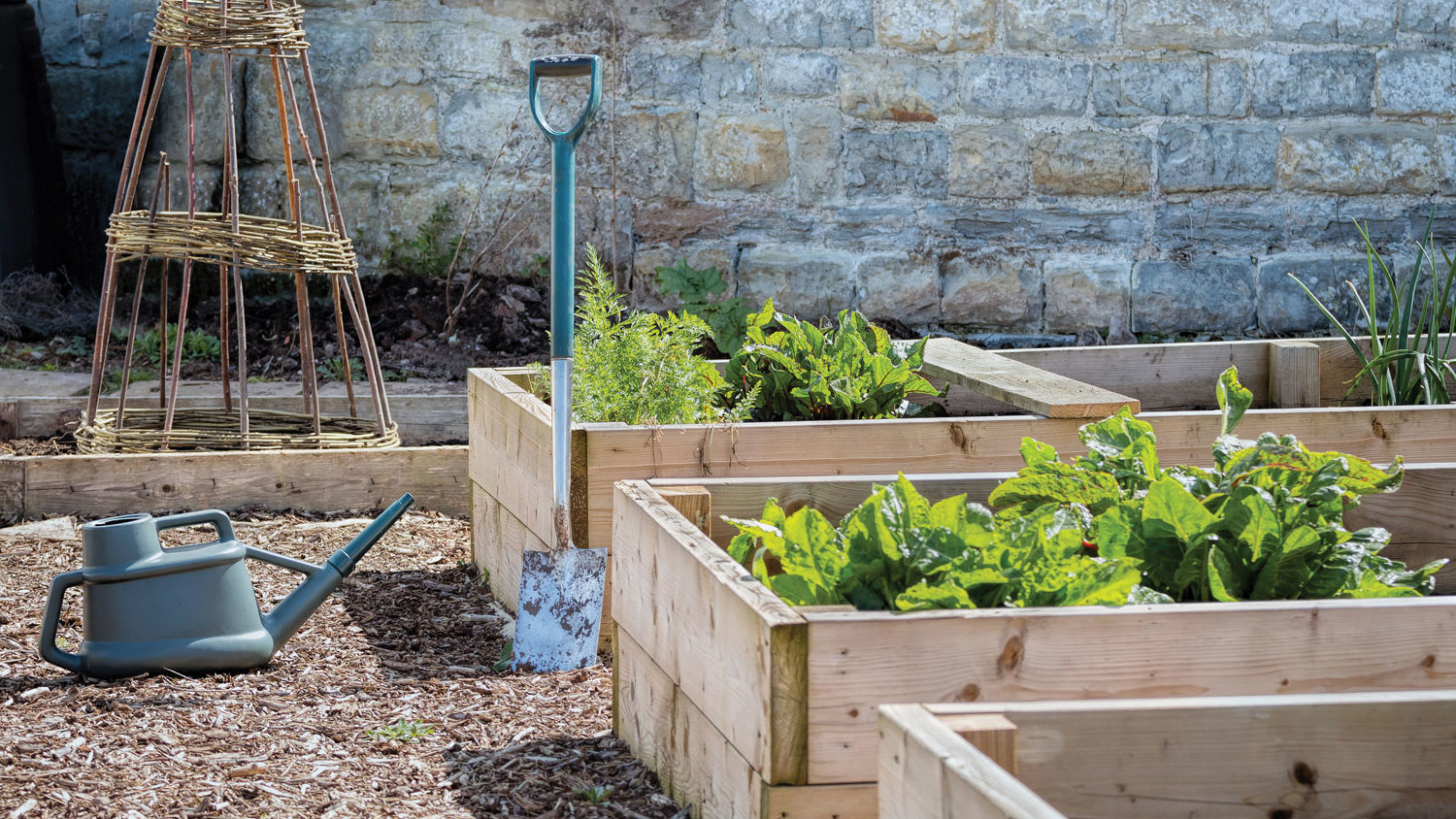
While fairly short in length, the return of Minnesota’s growing season is a welcome sign of spring. This year, try growing your own vegetables and herbs in a raised garden bed. All you’ll need is a small, sunny spot in a yard or community garden, along with some lumber, soil, and your choice of local, sustainably grown plant starts from our annual spring Plant Sale. Raised beds are an excellent option for growing your own food in the city since they allow you to easily manage soil health, water infiltration and drainage, and pests. Follow the steps below and you’ll be reaping the rewards of fresh homegrown produce in no time!
DIY Raised Bed Supplies
- One box of 2½” wood screws.
- Four 2″x10″ pieces of Western red cedar lumber, 8 feet in length.
- Four 2″x10″ pieces of Western red cedar lumber, 4 feet in length.
- One 4″x4″ piece of Western red cedar lumber, 8 feet in length, cut into four 20″-tall pieces.
- One cubic yard of soil — mixture consisting of ½ compost, ½ topsoil.
Instructions
- Explore your yard or community garden for a sunny, open spot that faces primarily south. Areas with southeast to southwest sun exposure will work well, too.
- Measure an area four feet wide by eight feet long. This will serve as the base of your raised bed. When plotting your space, ensure you have at least two feet of clearance on each side for accessing plants.
- Purchase lumber at a local hardware, garden supply, of home goods store, then assemble your raised bed using wood screws. Place 2″x10″ pieces of lumber in a rectangular shape, standing upright on the 2″ edge, with two four-foot end pieces overlapping lip edge of two eight-foot pieces. Fasten each piece of 2″x10″ lumber to an interior 4″x4″ corner piece of lumber using wood screws. Once constructed, fasten a second row of 2″x10″ boards to the interior 4″x4″ corner pieces.
- Place organic topsoil and compost mixture into your assembled raised bed. Fill to within 1–2″ of top.
- Plant your bed with a combination of edible annuals, such as tomatoes, cucumbers, peppers, onions, mixed greens, kale, and your favorite herbs, like basil, oregano, rosemary, cilantro, mint, dill, or parsley.
- A good rule of thumb when planting your raised bed is to place each plant within 6–8″ of one another to maximize efficient use of space. The distance between your extended thumb and pinky finger can be used to measure the spacing distance between plants. Place taller or vining plants, like tomatoes and cucumbers, toward the center of your bed, and shorter plants and herbs toward the perimeter. Trellis and stake plants as necessary.
- Water your new garden and watch it grow! Continue to water as needed throughout the season to keep soil damp and plants moistened.

